- Home
- Tom Clancy
Shadow Warriors: Inside the Special Forces Page 15
Shadow Warriors: Inside the Special Forces Read online
Page 15
Each time anyone made a PLF, he had to simulate a “prepared to land” position—that is, he’d reach up and pull down on the two front risers of his (simulated) parachute, with elbows tight to the side, chin tucked to the chest, knees slightly bent, feet and knees held tightly together with toes slightly pointed toward the ground. When he touched the ground, he’d roll in the direction that would most cushion his fall.
After PLFs, they advanced to the “swing landing fall trainer,” a circular steel frame suspended by a cable that hangs over a six-foot-high platform. The student, wearing a parachute harness, attached his risers to this frame, then stepped off the platform and began to swing free. The instructor on the ground controlled the swing and determined when and how the student would hit the ground. As often as not, it was when he was in the most awkward position for landing. This device realistically replicated the kinds of falls a jumper was likely to make under actual conditions. Since most injuries occur upon landing, it was vital for the student to master them all.
During the second week, they worked on the thirty-four-foot tower, which provided a rough likeness of the sensation of jumping out of an airplane, except there was no 125-knot wind blast. According to the experts, thirty-four feet is the optimum height for creating the greatest fear: Anyone who falls from that height without a parachute has a chance to survive. Above that height, it’s all over anyhow.
On top of the tower was a boxlike structure replicating part of an airplane fuselage. A steel cable extended from inside this “fuselage” at a slight angle downward for approximately 150 feet, and then it was anchored about eight feet off the ground. The student hooked his risers to a pulley that rode on this cable. Upon the command “Stand in the door,” the student took a position in the door. Upon the “Go” command, the student leapt up and out, and then immediately assumed a tight body position and began his count. By that time, he had fallen to the length of his risers, approximately eight feet, and could feel the jolt of the cable (in an actual jump he would have fallen approximately 200 to 250 feet by the time his parachute opened). When he felt the jolt, the jumper checked his (imaginary) canopy to make sure it was fully deployed, with no more than four broken suspension lines and no tears larger than his helmet. He did that by comparing his rate of fall with that of the other jumpers in the air; if he was falling faster than they were, he considered activating his reserve parachute.
During descent, the jumper kept a sharp lookout in order to avoid other jumpers, and then began his preparations for landing when he was approximately fifty to a hundred feet above the ground. By this time, he had reached the end of the cable. Once there, he was critiqued by a Black I lat and told to recover and jump again. About fifteen to twenty exits were required from the thirty-four-foot tower before a trainee got a “good to go.”
The last two days of the second week, Stiner and his comrades worked on the 250-foot towers. There, a trainee wore a special type of parachute, which was attached to a ring equal to the circumference of an actual parachute canopy. He was then pulled up to an extended arm on the tower. At the top, his parachute was released and he was allowed to float to the ground. He would then land as hard as if he’d jumped from an actual plane.
The third week was devoted to jumping. Also included were instructions on actions inside the aircraft, which were conducted in mock-ups. The Black Hats performed the duties of jumpmasters and would put everyone through the jump commands. These were: “Twenty minutes,” meaning: “Do a preliminary check of your own equipment; helmet tight, etc.” At ten minutes came “Get ready,” meaning: “Unbuckle your seat belt and prepare to stand up.” Next came “Outboard personnel, Stand up,” meaning: “Jumpers seated closest to the skin of the aircraft stand first.” Then “Inboard personnel, stand up,” meaning: “All the other jumpers, stand up.” Then “Hook up,” meaning: “All jumpers hook their snap fastener.” This was attached to the end of the static line, and hooked to the anchor line cable. Then “Check equipment,” meaning: “Each jumper checks his own equipment, plus the static line of the jumper to his front.” Then “Sound off for equipment check.” The count started in the rear of the stick (the line of jumpers), with each sounding off loudly, “Okay,” and slapping the buttocks of the man in front of him. The count was passed forward by every man in the stick. The last man to receive the count then signaled the jumpmaster, “All okay, jumpmaster.” One minute out from the drop zone, the loadmasters (part of the plane’s crew) opened the jump doors. The jumpmaster looked out to verify that they were in fact over the drop zone, then looked to the rear of the aircraft to verify that no following planes had dropped below the altitude where his paratroopers would be exiting. Once he had verified that it was safe to jump, he pointed to the first jumper and commanded : “Stand in the door.” The jumper shuffled to the door, assumed an exit position, and watched for the green light. When it lit, the jumpmaster commanded, “Go,” and slapped him on the buttocks. The jumper exited, and the stick followed at one-second intervals.
This procedure was followed before every jump, and it is still followed by airborne units today, no matter how experienced they are.
All jumps were made from C-119 aircraft (the old twin-tail flying boxcars), and the guys were ready “almost to jump without a parachute,” Stiner observes, “to get relief from rolling around in that sawdust pit and doing push-ups all day.
“The first jump was the easiest,” he continues, “at least for me. But that 125-knot blast of wind was something that none of us had experienced. On the ground, Black Hats with bullhorns were yelling at the students who weren’t doing it right; they gave strong personal critiques of each landing.
“We jumped four times that week, all during daylight. The fifth jump was with equipment, which included our load-bearing equipment and M-1 rifle.
“Saturday was a big day. Graduation! Families and girlfriends were allowed to attend and to assist in pinning on our wings. Everyone in my group graduated, except a few who’d been injured. We all felt very proud and privileged to wear the jump wings.
“Some people claim to love jumping out of airplanes. That may be so. But not me. Though 1 spent most of my career in airborne units and made 189 jumps, practically all at night with combat equipment, I was never crazy about jumping out of airplanes. After I had gained the confidence afforded by Jumpmaster School, however, I got to where jumping didn’t bother me.
“Airborne units are unique in the capability they provide—that is, ‘forced entry’ operations. It’s not just the jumping, it’s the type of people that comprise the ranks of airborne units which makes the assignment so special.”
SWAMPS AND MOUNTAINS
Carl Stiner graduated from Jump School on Saturday and reported into Ranger School the next morning. That afternoon, he and his companions received orientations and drew equipment. They began training at daylight Monday morning.
Ranger School has two principal aims: to prepare small-unit leaders for the missions and situations they are likely to face in combat, and to teach skills that are necessary for survival in enemy-held territory. It is the most physically demanding school in the Army for non-Special Operations soldiers.
Though Ranger School is normally nine weeks long, for Stiner it lasted eight weeks—October to December 1958. (Nothing was deleted but the sleep.) It consisted of three phases: two weeks at Fort Benning, Georgia; three weeks in the Okefenokee Swamp at Eglin Air Force Base, Florida; and three weeks in the mountains at Dahlonega, Georgia.7
Carl Stiner continues:
ONCE a soldier has completed the Ranger Course, he knows down to the tips of his fingers what his capabilities and limitations are. He has not only mastered the skills required of a small-unit leader in combat, but he also has the confidence and skills necessary to survive there. I have always trusted a Ranger-qualified officer or NCO to lead patrols for me in combat or any other tough situation, because I knew he had the skills necessary to accomplish the mission and would “take care” of those
entrusted to his leadership in the right way.
These experiences do not only apply to junior officers, they become the essential underpinnings of competence through all the ranks and assignments of an Army career-particularly command. They give an understanding of a man’s capabilities and limitations that comes in no other way, and they develop self-confidence in ways not otherwise possible.
You have to be made of the right stuff to do it successfully. In practice it means that you go day and night; you get very little sleep; you are exhausted; you may get shin splints; you’re strung out; you are in swamps; you’re in mountains; you’re cold; you’re wet; you might be exposed to frostbite or hypothermia; or else you’re hot; you’re thirsty; you learn to live off the land and eat what’s available. You learn to depend on each other. Although each man is expected to master individual skills, and in all field operations you usually operate in squad- and platform-size units, you take care of each other. From day one you are assigned a “Ranger buddy.” In other words, if your buddy should fall out, you are expected to carry him—or fall out trying.
Under these conditions, there’s no place for the limp-wristed or faint of heart.
THE FORT BENNING PHASE The basic objective of the Benning phase was to learn the fundamentals of patrolling: the essentials of planning; opcrations orders; selecting primary and alternate routes, assembly areas, rallying points, passage of lines, actions at the objectives; and above all the value of rehearsals. You did it over and over until you got it right.
The first two weeks were focused on heavy-duty physical training—log drills, endurance runs, hand-to-hand combat, the bayonet assault course, and the obstacle course. It was also during this phase that we were introduced to a new form of PT—“rope football.” We played this in a sawdust pit of not more than sixty feet in diameter. The class was divided into two teams of about fifty men, who’d go down in a football stance facing each other about three feet apart. In between the teams was dropped a knotted ball of cable rope that weighed something like fifty pounds. The object of the game was to move the ball to the other side of the pit. Anything went. There were no time-outs, no fouls or penalties for unsportsmanlike conduct. You scratched, clawed, climbed over, or did whatever else you had to do to win. The penalty for losing was seventy-five or a hundred push-ups.
We also did a lot of rope work—learning the different knots and how to build different kinds of rope bridges—and we did a lot of rope climbing. There were two objectives here: to learn the different ways to climb a rope, and to build upper-body strength.
Another important element was advanced land navigation. Soldiers have to be expert navigators—to be able to get to where they are going when they are not familiar with the territory—and they have to do it quickly under the worst circumstances. Nowadays we have global positioning systems to make navigating easier, and these do give us an enormous advantage, but there is no substitute for a map in the hands of a good map reader and a compass in the hands of a good navigator. If you have these, and if all the electronic wizardry fails, you still have all you need to find out where you are and to keep you on course.
Also critical to the team is a good pace man, who keeps an accurate count of how much distance you have covered. He has to be able to consistently step a yard or meter with each normal step. Then he keeps count of the pace. One way to do it is by moving a small stone from one pocket to another every time he has gone a hundred paces. Another technique is to tie a knot in a string for each hundred paces. There are any number of techniques, of course, but the point is the same: You have to have a system to ensure that the count is not lost (or forgotten) should the patrol be ambushed.
Finally, we were taught every fundamental about patrolling: the different kinds of patrols (reconnaissance, combat, raids, ambushes, etc.), the organizations of each type of patrol, the patrol order, selecting routes, actions at danger areas, and action upon reaching the objective. During the Benning phase, we rehearsed many times over our patrolling techniques.
THE FLORIDA PHASE We left Fort Benning early on a Saturday morning in October on buses headed to the Florida Ranger Camp on Eglin Air Force Base. Few of us remembered much about the trip, which took most of the day, because we slept as much as we could.
Near the Florida state line, a member of the Ranger cadre woke us up to put us in the right frame of mind. He read us a “general situation”: “The United States is at war,” he told us. “And we have entered a mythical country” —I’ve forgotten its name—“as a replacement unit.” From here on out, everything was to be a tactical simulation of real war—tactical twenty-four hours each and every day.
When we reached our Florida destination, our accommodations were austere—tents that accommodated twenty-four men each, canvas cots, no floors, a World War II-type mess hall, a small arms room, and a small aid station manned by a single medic. This didn’t bother me; it was obvious that we wouldn’t be spending much time there (and this would be luxury compared with where we were going).
About half an hour after we arrived, we were given an alert order to be prepared to move out within two hours on our first reconnaissance patrol. Our mission: to reconnoiter a possible enemy missile site. When we moved out, we moved directly into the swamps into water up to our waists. We were there for the next three days and nights.
This turned out to be the norm for the entire training—constant patrolling, constant raids, constant ambushes ... and always wet and cold. You don’t normally think of Florida as cold. But in October, that’s what it can get if you are constantly wet, even in Florida.
As a part of the Florida phase, we were given special instructions on “survival”: how to catch and prepare food; what to eat and what not to eat (which wild plants and berries were safe, which weren’t): and we were given chickens, rabbits, alligators, opossums, raccoons, and snakes that we had to prepare for some day’s “feast.”
We learned a lot about snakes. They were all over the place, particularly coral snakes and water moccasins. One day the cadre brought out what seemed to be a wagonload of snakes (nonpoisonous!) and passed them among us (we were sitting on logs). They started with one or two at a time, but that soon turned into armloads of six or eight. We got familiarized with snakes in a hurry.
Another challenge was the confidence course—an inverted crawl on ropes hanging forty feet above murky, over-our-heads water, with explosives in the water going off constantly. At some point on the rope, we’d be told to drop into the water and swim to dry land about a hundred feet away—with the explosives still going off.
During the three weeks, we only saw base camp, our tent, and the mess hall about four or five times. At other times we ate food provided by “partisans” (that is, if we linked up with them at the designated place and time—we didn’t always do that); and it was usually live chickens, rabbits, or even a goat.
We didn’t get much sleep either. I was one of the designated “sleep keepers.” That meant I had to keep a record of whatever sleep 1 was able to get that was more than thirty minutes. As I recall, at the end of seventeen days, my records indicated it totalled eight hours and ten minutes.
I’ve always loved the outdoors. I really enjoy the wilderness and its challenges. So, acute discomforts aside—the constant wet and cold and lack of steep—I really enjoyed the Florida phase. I had never been in a really big swamp, especially one as treacherous and challenging as the Okefenokee. The Yellow River runs right through it—very swift, deep, and dangerous. You can easily blunder into it, especially at night, without knowing it. That is, you can be wading up to your waist in standing swamp water, and then bam, you’re in the river, swift, strong, and deep, cutting right through the still water. It’s dangerous!
When the three weeks were over, most of us who’d started were still hanging in and looking forward to the next phase, though some had been eliminated—for attitude, lack of motivation, physical failure, or whatever: the rest of us never really knew why. You knew somebody’d be
en eliminated when you saw a student standing out at the end of Flight Strip Number 7, which was located near our base camp, with his bag packed, waiting for the plane from Fort Benning, which came about every three days. He stayed there by himself until the plane came. I can’t imagine how humiliating this must have been. At least it would have been terrible for me.
THE MOUNTAIN PHASE We came in from our last patrol in Florida at midafternoon on a Saturday, finished our patrol debriefings, and began to clean and turn in the weapons and equipment that would remain at the campsite. After a big meal in the mess hall we hit the sack somewhere around midnight—dry for a change—for much-needed sleep.
At about 0300 Sunday morning, the Ranger cadre came running through the camp yelling: “Formation in ten minutes. Fall out with all your gear, prepared to move out.”
We jumped out of the sack (having slept in our fatigues), quickly put on our dry pair of boots, rolled up our sleeping bags (which stayed with the cot), put on our Ranger web gear (harness), and fell in at our appointed place in a company formation. The camp commander, a major, positioned himself before the formation and announced, “There has been a major enemy breakthrough in the northern part of the operational area.”—northern Georgia—“You are to move out immediately as much-needed reinforcements in that sector of the combat zone.” Buses arrived ten minutes later, and we set out for northern Georgia.

 Changing of the Guard
Changing of the Guard Clear and Present Danger
Clear and Present Danger Hounds of Rome
Hounds of Rome Breaking Point
Breaking Point Tom Clancy's Jack Ryan Books 7-12
Tom Clancy's Jack Ryan Books 7-12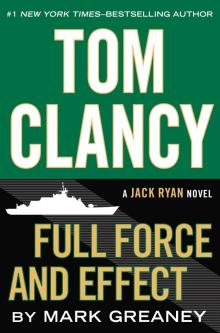 Full Force and Effect
Full Force and Effect The Archimedes Effect
The Archimedes Effect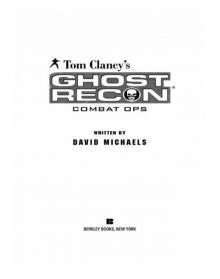 Combat Ops
Combat Ops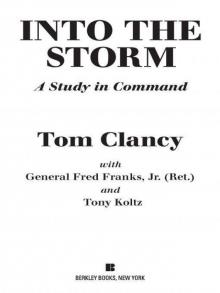 Into the Storm: On the Ground in Iraq
Into the Storm: On the Ground in Iraq Under Fire
Under Fire Point of Impact
Point of Impact Red Rabbit
Red Rabbit Rainbow Six
Rainbow Six The Hunt for Red October
The Hunt for Red October The Teeth of the Tiger
The Teeth of the Tiger Conviction (2009)
Conviction (2009)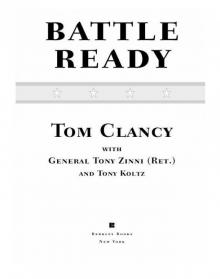 Battle Ready
Battle Ready Patriot Games
Patriot Games The Sum of All Fears
The Sum of All Fears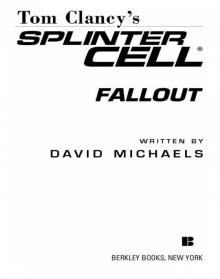 Fallout (2007)
Fallout (2007) Red Storm Rising
Red Storm Rising The Cardinal of the Kremlin
The Cardinal of the Kremlin Executive Orders
Executive Orders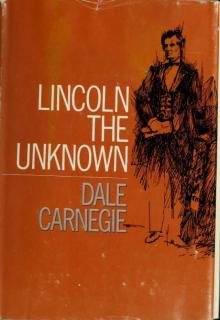 Lincoln, the unknown
Lincoln, the unknown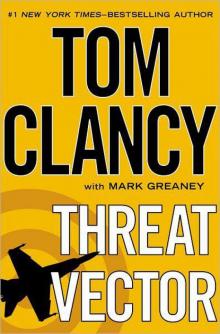 Threat Vector
Threat Vector The Hunted
The Hunted Shadow Warriors: Inside the Special Forces
Shadow Warriors: Inside the Special Forces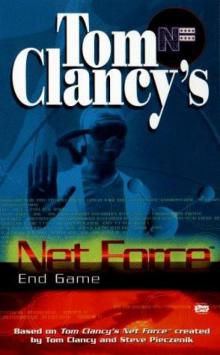 End Game
End Game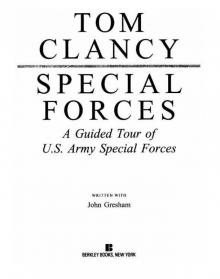 Special Forces: A Guided Tour of U.S. Army Special Forces
Special Forces: A Guided Tour of U.S. Army Special Forces Locked On
Locked On Line of Sight
Line of Sight Tom Clancy Enemy Contact - Mike Maden
Tom Clancy Enemy Contact - Mike Maden Fighter Wing: A Guided Tour of an Air Force Combat Wing
Fighter Wing: A Guided Tour of an Air Force Combat Wing Springboard
Springboard Line of Sight - Mike Maden
Line of Sight - Mike Maden EndWar
EndWar Dead or Alive
Dead or Alive Tom Clancy Support and Defend
Tom Clancy Support and Defend Checkmate
Checkmate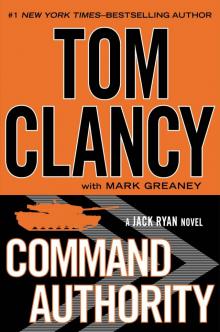 Command Authority
Command Authority Carrier: A Guided Tour of an Aircraft Carrier
Carrier: A Guided Tour of an Aircraft Carrier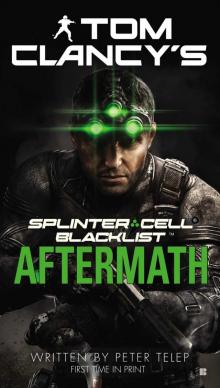 Blacklist Aftermath
Blacklist Aftermath Marine: A Guided Tour of a Marine Expeditionary Unit
Marine: A Guided Tour of a Marine Expeditionary Unit Commander-In-Chief
Commander-In-Chief Armored Cav: A Guided Tour of an Armored Cavalry Regiment
Armored Cav: A Guided Tour of an Armored Cavalry Regiment Tom Clancy's Jack Ryan Books 1-6
Tom Clancy's Jack Ryan Books 1-6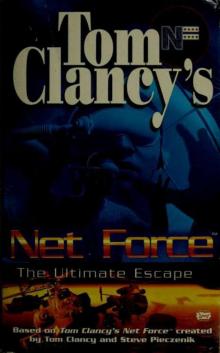 The Ultimate Escape
The Ultimate Escape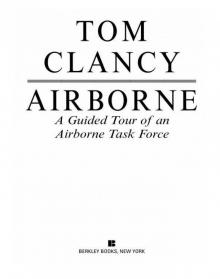 Airborne: A Guided Tour of an Airborne Task Force
Airborne: A Guided Tour of an Airborne Task Force Debt of Honor
Debt of Honor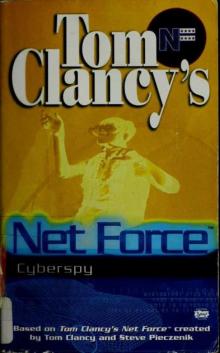 Cyberspy
Cyberspy Point of Contact
Point of Contact Operation Barracuda (2005)
Operation Barracuda (2005)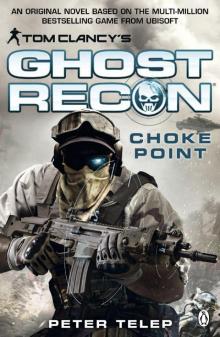 Choke Point
Choke Point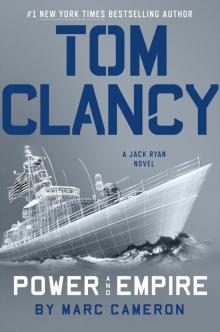 Power and Empire
Power and Empire Every Man a Tiger: The Gulf War Air Campaign
Every Man a Tiger: The Gulf War Air Campaign Endgame (1998)
Endgame (1998) EndWar: The Missing
EndWar: The Missing Splinter Cell (2004)
Splinter Cell (2004) The Great Race
The Great Race True Faith and Allegiance
True Faith and Allegiance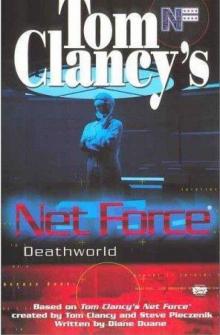 Deathworld
Deathworld Ghost Recon (2008)
Ghost Recon (2008) Duel Identity
Duel Identity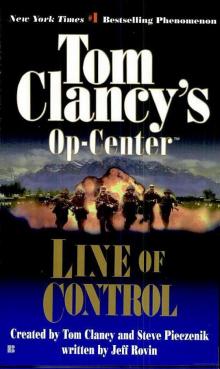 Line of Control o-8
Line of Control o-8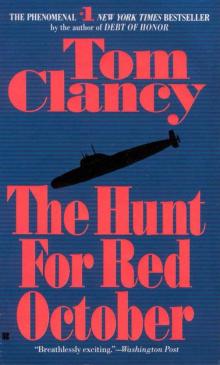 The Hunt for Red October jr-3
The Hunt for Red October jr-3 Hidden Agendas nf-2
Hidden Agendas nf-2 Acts of War oc-4
Acts of War oc-4 Ruthless.Com pp-2
Ruthless.Com pp-2 Night Moves
Night Moves The Hounds of Rome - Mystery of a Fugitive Priest
The Hounds of Rome - Mystery of a Fugitive Priest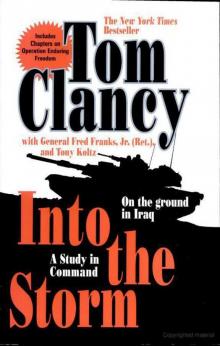 Into the Storm: On the Ground in Iraq sic-1
Into the Storm: On the Ground in Iraq sic-1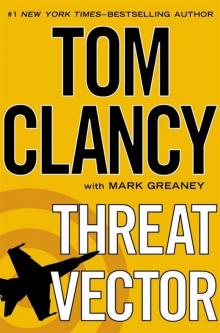 Threat Vector jrj-4
Threat Vector jrj-4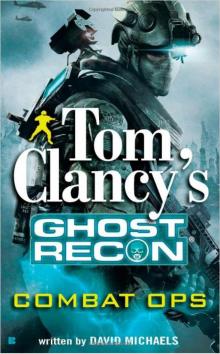 Combat Ops gr-2
Combat Ops gr-2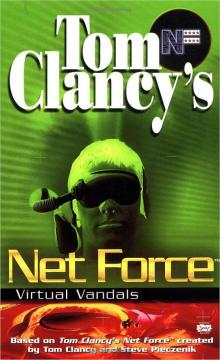 Virtual Vandals nfe-1
Virtual Vandals nfe-1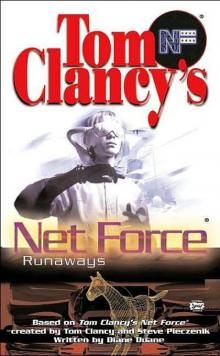 Runaways nfe-16
Runaways nfe-16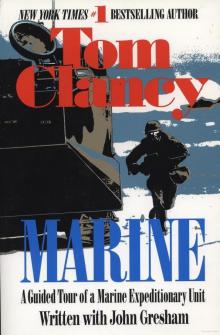 Marine: A Guided Tour of a Marine Expeditionary Unit tcml-4
Marine: A Guided Tour of a Marine Expeditionary Unit tcml-4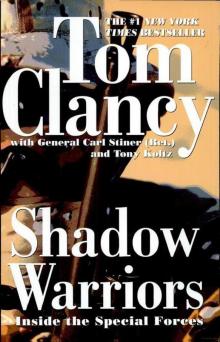 Shadow Warriors: Inside the Special Forces sic-3
Shadow Warriors: Inside the Special Forces sic-3 Jack Ryan Books 1-6
Jack Ryan Books 1-6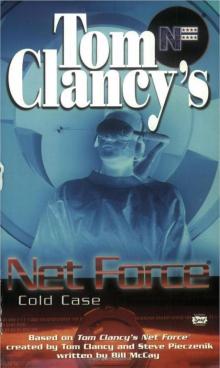 Cold Case nfe-15
Cold Case nfe-15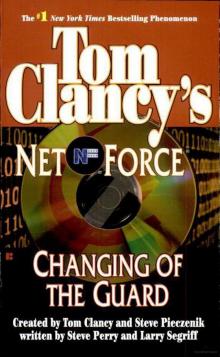 Changing of the Guard nf-8
Changing of the Guard nf-8 Splinter Cell sc-1
Splinter Cell sc-1 Battle Ready sic-4
Battle Ready sic-4 The Bear and the Dragon jrao-11
The Bear and the Dragon jrao-11 Fighter Wing: A Guided Tour of an Air Force Combat Wing tcml-3
Fighter Wing: A Guided Tour of an Air Force Combat Wing tcml-3 Patriot Games jr-1
Patriot Games jr-1 Jack Ryan Books 7-12
Jack Ryan Books 7-12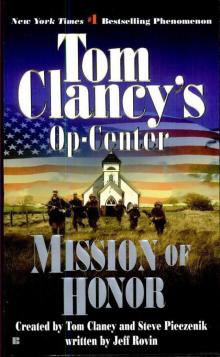 Mission of Honor o-9
Mission of Honor o-9 Private Lives nfe-9
Private Lives nfe-9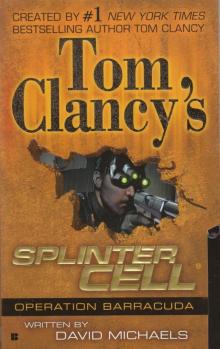 Operation Barracuda sc-2
Operation Barracuda sc-2 Cold War pp-5
Cold War pp-5 Point of Impact nf-5
Point of Impact nf-5 Red Rabbit jr-9
Red Rabbit jr-9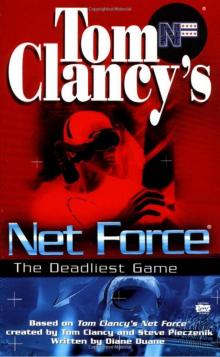 The Deadliest Game nfe-2
The Deadliest Game nfe-2 Springboard nf-9
Springboard nf-9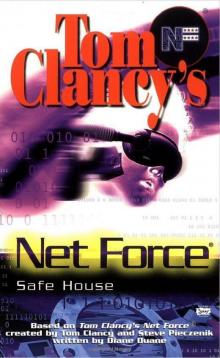 Safe House nfe-10
Safe House nfe-10 EndWar e-1
EndWar e-1 Duel Identity nfe-12
Duel Identity nfe-12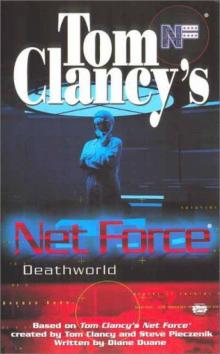 Deathworld nfe-13
Deathworld nfe-13 Politika pp-1
Politika pp-1 Rainbow Six jr-9
Rainbow Six jr-9 Tom Clancy's Power Plays 1 - 4
Tom Clancy's Power Plays 1 - 4 Endgame sc-6
Endgame sc-6 Executive Orders jr-7
Executive Orders jr-7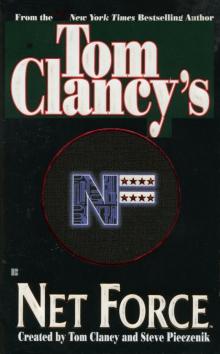 Net Force nf-1
Net Force nf-1 Call to Treason o-11
Call to Treason o-11 Locked On jrj-3
Locked On jrj-3 Against All Enemies
Against All Enemies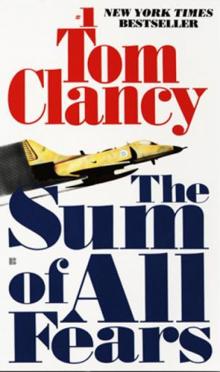 The Sum of All Fears jr-7
The Sum of All Fears jr-7 Sea of Fire o-10
Sea of Fire o-10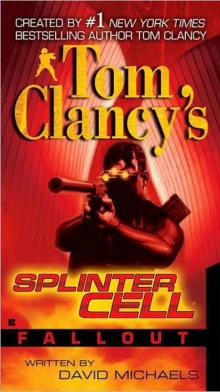 Fallout sc-4
Fallout sc-4 Balance of Power o-5
Balance of Power o-5 Shadow Watch pp-3
Shadow Watch pp-3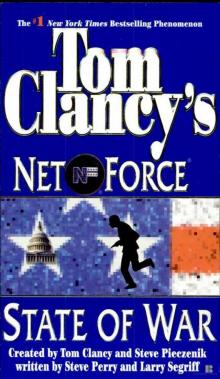 State of War nf-7
State of War nf-7 Wild Card pp-8
Wild Card pp-8 Games of State o-3
Games of State o-3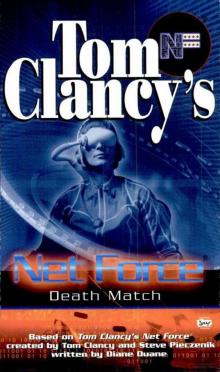 Death Match nfe-18
Death Match nfe-18 Against All Enemies mm-1
Against All Enemies mm-1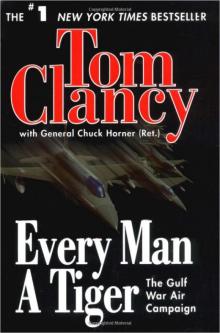 Every Man a Tiger: The Gulf War Air Campaign sic-2
Every Man a Tiger: The Gulf War Air Campaign sic-2 Cybernation nf-6
Cybernation nf-6 Support and Defend
Support and Defend Night Moves nf-3
Night Moves nf-3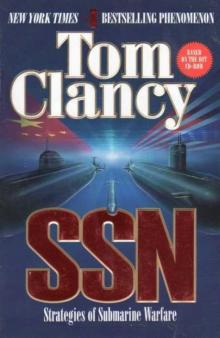 SSN
SSN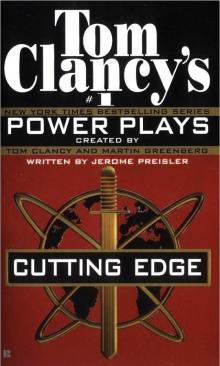 Cutting Edge pp-6
Cutting Edge pp-6 The Cardinal of the Kremlin jrao-5
The Cardinal of the Kremlin jrao-5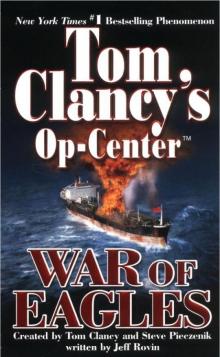 War of Eagles o-12
War of Eagles o-12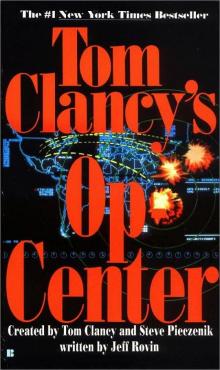 Op-Center o-1
Op-Center o-1 Mirror Image o-2
Mirror Image o-2 The Archimedes Effect nf-10
The Archimedes Effect nf-10 Teeth of the Tiger jrj-1
Teeth of the Tiger jrj-1 Bio-Strike pp-4
Bio-Strike pp-4 State of Siege o-6
State of Siege o-6 Debt of Honor jr-6
Debt of Honor jr-6 Zero Hour pp-7
Zero Hour pp-7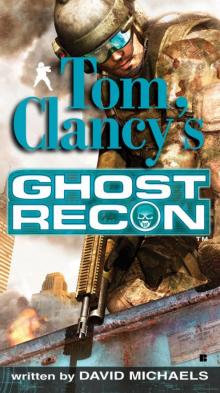 Ghost Recon gr-1
Ghost Recon gr-1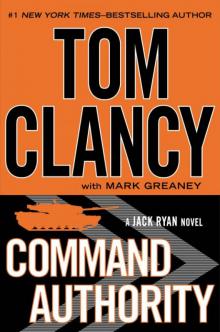 Command Authority jr-10
Command Authority jr-10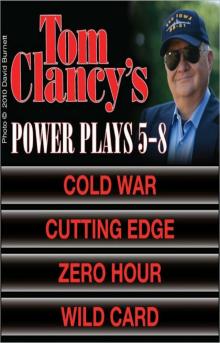 Tom Clancy's Power Plays 5 - 8
Tom Clancy's Power Plays 5 - 8 Checkmate sc-3
Checkmate sc-3 Breaking Point nf-4
Breaking Point nf-4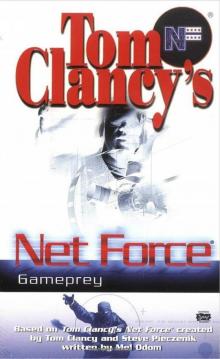 Gameprey nfe-11
Gameprey nfe-11 The Hunted e-2
The Hunted e-2 Hidden Agendas
Hidden Agendas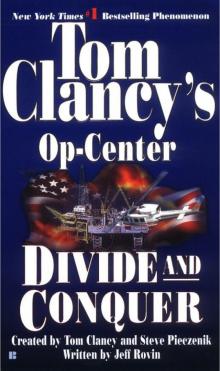 Divide and Conquer o-7
Divide and Conquer o-7